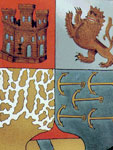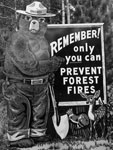(Note: By the completion of fifth grade, Iowa students are expected to master the following standards.)
Subject: Behavioral Sciences
Behavioral sciences include, but are not limited to, the areas of sociology, anthropology and psychology. In addressing these disciplines the actions and reactions of humans are studied through observational and experimental methods.
Essential Concept and/or Skill:
Understand the changing nature of society.
-
Understand various institutions, ideas, values and behavior patterns change over time.
-
Understand that the decisions of one generation provide the range of possibilities open to the next generation.
-
Understand that human beings can use the memory of their past experiences to make judgments about new situations.
Essential Concept and/or Skill:
Understand the influences on individual and group behavior and group decision making.
-
Understand that people involved in a dispute often have different points of view.
-
Understand that communicating different points of view in a dispute can often help people to find a satisfactory compromise.
-
Understand that resolving a conflict by force rather than compromise can lead to more problems.
-
Understand that if a conflict cannot be settled by compromise, it may be decided by a vote if everyone agrees to accept the results.
-
Understand that family, groups and community influence the individual's daily life and personal choices.
-
Understand stereotyping.
-
Understand the role of cultural unity and diversity within and across groups.
Essential Concept and/or Skill:
Understand how personality and socialization impact the individual.
-
Understand that various factors contribute to the shaping of a person's identity.
-
Understand that human beings have different interests, motivations, skills, and talents.
-
Understand the rights and responsibilities of the individual in relation to his/her social group.
-
Understand various meanings of social group, general implications of group membership, and different ways that groups function.
Essential Concept and/or Skill:
Understand the process of how humans develop, learn, adapt to their environment, and internalize their culture.
-
Understand the fundamental concepts of growth and development.
-
Understand learning and physical development affect behavior.
-
Understand personal changes over time, such as those related to physical development and personal issues.
-
Understand that language, stories, folktales, music, and artistic creations are expressions of culture.
-
Understand that interactions among learning, inheritance, and physical development affect human behavior.
-
Understand that group and cultural influences contribute to human development, identity, and behavior.
Essential Concept and/or Skill:
Understand current social issues to determine how the individual formulates opinions and responds to issues.
-
Understand that the way a person views an issue reflects personal beliefs, experiences, and attitudes.
Essential Concept and/or Skill:
Understand how to evaluate social research and information.
-
Understand the use of research procedures and skills to investigate an issue.
Subject: Economics
Economics addresses the production, distribution, and consumption of goods and services. The concept of scarcity is understood to mean that available resources are insufficient to satisfy the wants and needs of everyone. Economics is therefore founded upon the alternative use of available resources and the study of choices.
Essential Concept and/or Skill:
Understand the role of scarcity and economic trade-offs and how economic conditions impact people’s lives.
-
Understand that goods and services are scarce because there are not enough resources to satisfy all of the wants of individuals, governments, and societies
-
Understand that consumers buy less of products and services when prices go up and buy more when prices go down.
-
Understand that businesses are willing to sell more products and services when prices go up and less when the price goes down.
-
Understand the concept of unemployment.
-
Understand the importance of work.
-
Understand how competition among sellers results in lowers costs and higher product quality.
Essential Concept and/or Skill:
Understand the functions of economic institutions.
-
Understand that banks provide money to consumers and serve as the intermediary between savers and borrowers.
Essential Concept and/or Skill:
Understand how governments throughout the world influence economic behavior.
-
Understand that the government pays for goods and services it provides by taxing and borrowing.
-
Understand that all societies have developed economic systems and there are advantages and disadvantages to each type of system.
-
Understand when consumers buy goods some of the money that goes to the business is used to pay for resources and taxes.
Essential Concept and/or Skill:
Understand people in all parts of the world trade with one another.
-
Understand the basic concept of trading.
-
Understand that different currencies are used throughout the world.
Essential Concept and/or Skill:
Understand factors that create patterns of interdependence in the world economy.
-
Understand that when countries specialize they become more interdependent.
-
Understand the impact of increasing economic interdependence in different regions of the world.
-
Understand that local goods and services are part of the global economy.
-
Understand the concepts of exports and imports.
Essential Concept and/or Skill:
Understand that advancing technologies impact the global economy.
-
Understand that technologies have costs and benefits associated with them.
-
Understand that new inventions reflect people's needs and wants; and when these change, technology changes to reflect the new needs and wants.
-
Understand that the design process is a series of methodical steps for turning ideas into useful products and systems.
-
Understand that the manufacturing process includes designing product, gathering the resources, and producing a finished product.
Essential Concept and/or Skill:
Understand that advancing technologies impact the global economy.
-
Understand that there are producers and consumers in all economies.
-
Understand supply and demand in various types of economies.
-
Understand that production, distribution, exchange, and consumption of goods and services are economic decisions with which all societies and nations must deal.
-
Understand how nations throughout the world have joined with one another to promote economic development and growth.
-
Understand barriers to trade among people across nations.
Subject: Geography
Geography is the study of the interaction between people and their environments. Geography therefore looks at the world through the concepts of location, place, human-environmental interaction, movement, and region.
Essential Concept and/or Skill:
Understand the use of geographic tools to locate and analyze information about people, places, and environments.
-
Understand political, topographical and historical maps, aerial photos and maps.
-
Understand the use of mental maps to organize information about people, places, and environments in a spatial context.
-
Understand the concepts of title, legend, cardinal directions, distance, grids.
-
Understand the use of data sources, atlases, data bases, grid systems, charts, graphs, and maps to generate, manipulate, and interpret information.
-
Understand the spatial elements of point, line, area and volume.
-
Understand the representations of major physical and human features on maps and globes.
Essential Concept and/or Skill:
Understand how geographic and human characteristics create culture and define regions.
-
Understand the characteristics of regions--physical and cultural.
-
Understand regions change over time and the causes and consequences of these changes.
-
Understand ways regional, ethnic, and national cultures influence individuals' daily lives.
-
Understand how people from different cultures think about and deal with their physical environment and social conditions.
-
Understand language, stories, folktales, music and artistic creations serve as expressions of culture and influence behavior of people.
Essential Concept and/or Skill:
Understand how human factors and the distribution of resources affect the development of society and the movement of populations.
-
Understand causes and effects of human migration.
-
Understand reasons for the growth and decline of settlements.
-
Understand density and sparcity in terms of human settlement.
-
Understand the relationship between population growth and resource use.
-
Understand the concepts of renewable and non-renewable resources.
-
Understand recycling.
-
Understand the relation between economic activities and natural resources in areas.
Essential Concept and/or Skill:
Understand how physical processes and human actions modify the environment and how the environment affects humans.
-
Understand the characteristics of places are shaped by physical and human processes.
-
Understand humans interact and adapt to the physical environment.
-
Understand ways to monitor science and technology in order to protect the physical environment, individual rights and the common good.
-
Understand laws and policies that govern the environment.
Subject: History
History is the study and analysis of the past. Built upon a foundation of historical knowledge, history seeks to analyze the past in order to describe the relationship between historical facts, concepts, and generalizations. History draws upon cause and effect relationships within multiple social narratives to help explain complex human interactions. Understanding the past provides context for the present and implications for the future.
Essential Concept and/or Skill:
Understand historical patterns, periods of time and the relationships among these elements.
-
Understand the similarities and differences between various civilizations within a time period.
-
Understand problems, issues, and dilemmas of life in the past and their causes.
-
Understand differences in life today compared to life in the past
-
Understand causes and effects of events within a time period.
Essential Concept and/or Skill:
Understand how and why people create, maintain, or change systems of power, authority, and governance.
-
Understand groups and institutions work to meet individual needs and the common good of all.
-
Understand that belief systems affect government policies and laws.
-
Understand the consequences of governmental decisions.
Essential Concept and/or Skill:
Understand the role of culture and cultural diffusion on the development and maintenance of societies.
-
Understand ways culture has influenced interactions of various groups.
-
Understand ways culture affects decisions of a society, group or individual.
-
Understand major historical events and developments that involved interaction among various groups.
Essential Concept and/or Skill:
Understand the role of individuals and groups within a society as promoters of change or the status quo.
-
Understand roles of important individuals and groups in technological and scientific fields.
-
Understand that specific individuals had a great impact on history
-
Understand the people, events, problems, and ideas that were significant in creating the history of their state.
-
Understand how democratic values have been exemplified by people, events, and symbols.
Essential Concept and/or Skill:
Understand the effect of economic needs and wants on individual and group decisions.
-
Understands factors that shaped the economic system in the United States.
-
Understand that economic activities in the community have changed over time.
-
Understand that the types of work local community members do have changed over time.
Essential Concept and/or Skill:
Understand the effects of geographic factors on historical events.
-
Understand varying landforms and geographic features and their importance in the development of communities.
-
Understand seasons, climate, and weather, environmental change and crises affect social and economic development.
-
Understand major land and water routes of explorers.
Essential Concept and/or Skill:
Understand the role of innovation on the development and interaction of societies.
-
Understand the influence of cultural, scientific, and technological decisions on societies.
-
Understand ways science and technology have changed the way people think about the natural world
-
Understands that the use of technology in the local community has changed over time.
Essential Concept and/or Skill:
Understand cause and effect relationships and other historical thinking skills in order to interpret events and issues.
-
Understand processes important to reconstructing and interpreting the past.
-
Understand the historical perspective including cause and effect.
-
Understand how to view the past in terms of the norms and values of the time.
-
Understand interpretation of data in timelines.
Subject: Political Science/Civic Literacy
Political science is the study of power and authority through the examination of political processes, governmental institutions, and human behavior in a civil society. In this context the study of civics is understood to include the form and function of government. Civic literacy encompasses civics but also addresses the individual’s social and political participation.
Essential Concept and/or Skill:
Understand the rights and responsibilities of each citizen and demonstrate the value of lifelong civic action.
-
Understand what it means to be a citizen.
-
Understand why civic responsibility is important and know examples of civic responsibility.
-
Understand that Congress passes laws to protect individual rights.
-
Understand how people can participate in their government.
-
Understand what political leaders do and why leadership is necessary in a democracy.
-
Understand opportunities for leadership and public service in the student’s own classroom, school, community, state, and the nation.
-
Understand the importance of voluntarism as a characteristic of American society.
Essential Concept and/or Skill:
Understand how the government established by the Constitution embodies the enduring values and principles of democracy and republicanism.
-
Understand the fundamental values and principles of American democracy.
-
Understand the difference between power and authority.
-
Understand fundamental values and principles of American democracy are expressed in documents such as the Declaration of Independence, the Preamble to the United States Constitution, and the Bill of Rights, as well as in American songs, stories, and speeches.
-
Understand the costs and benefits of diversity in American society.
Essential Concept and/or Skill:
Understand the purpose and function of each of the three branches of government established by the Constitution.
-
Understand that the legislative branch passes laws to protect individual rights.
-
Understand that the executive branch carries out and enforces laws to protect individual rights.
-
Understand that the judicial branch, headed by the Supreme Court, makes decisions concerning the law that aim to protect individual rights.
Essential Concept and/or Skill:
Understand the differences among local, state and national government.
-
Understand the roles of local, state and national government and the roles of representative leaders at these levels such as mayor, governor and President.
-
Understand major services provided by national, state, and local governments.
-
Understand how national, state and local government officials are chosen.
Essential Concept and/or Skill:
Understand the role of the United States in current world affairs.
-
Understand that the world is divided into many different nations with each one having its own government.
-
Understand the major ways nations interact with each other such as trade, diplomacy, cultural contacts, treaties or agreements, and use of military force.
-
Understand factors that contribute to cooperation and cause disputes within and among groups and nations.

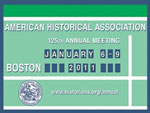

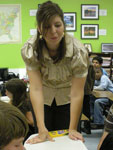
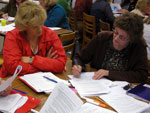
 Maybe you have a presidential library and museum nearby, providing educators with workshops on using archival resources. Or a local university that offers professional development courses for teachers (such as the
Maybe you have a presidential library and museum nearby, providing educators with workshops on using archival resources. Or a local university that offers professional development courses for teachers (such as the 